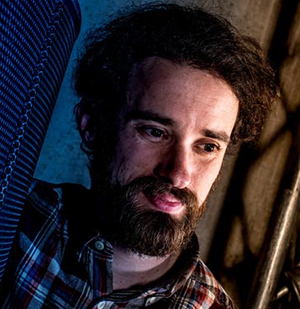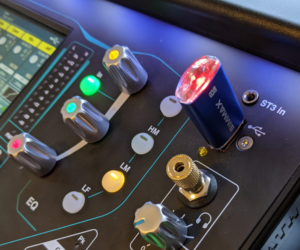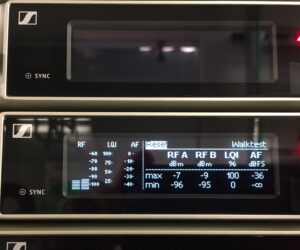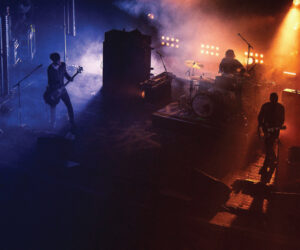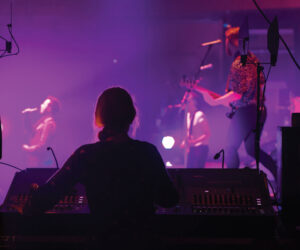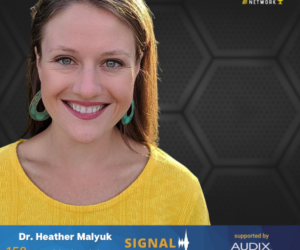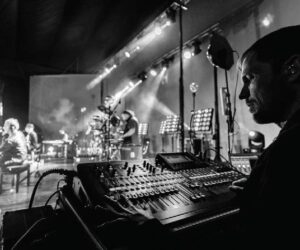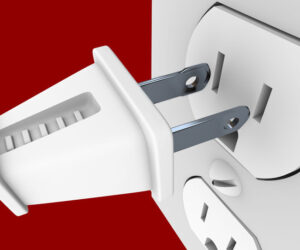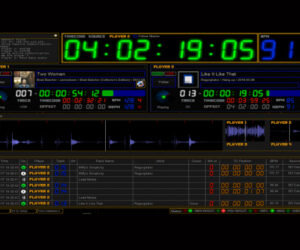The quote in the title of this article was borrowed from a Journal of the Audio Engineering Society paper published in 1980 [1]. The author was making the argument that if the live event industry, specifically audio engineers, didn’t take a proactive approach to sound level limits, they would soon find themselves at the mercy of government-formulated regulations that may be unfit for purpose, thus detracting from the live event experience.
A technical document on managing live event sound exposure and noise pollution, published in May 2020 [2], gives a big clue as to how we’ve done – poorly. We live in a world where sound level limits change not only from country to country, but from state to state, city to city, and even venue to venue. Good luck if you’re a touring engineer!
The situation is further muddled when you look past the numerical level limit and consider averaging time, measurement location, weighting, and so on. Again, there is limited consistency between existing regulations and, in many cases, poor understanding by the people meant to be enforcing these rules.
In parallel with the explosion of sound level limits across the globe over the past half century or so, the World Health Organization (WHO) has reported a worrying increase in hearing loss, particularly among young people. They report, through their Make Listening Safe initiative [3], that over 1.1 billion young people follow unsafe listening practices, with 49 million people aged 12-35 living with disabling hearing loss.
The latter number is expected to rise sharply over the coming decades, unless action is taken. As part of this WHO initiative, a global standard for safe listening venues and events was just released ahead of World Hearing Day on March 3, 2022 (Figure 1), stipulating a sound level limit of 100 dB LAeq,15min (see sidebar What is Leq?), among other guidance.

Before you start to panic, rest assured that the WHO involved live sound professionals (representing working engineers, major manufacturers and relevant academics) in the formulation and drafting of this standard. The goal is not to make us “turn it down,” but rather to present a safe listening environment to all audience members through sensible sound system design, practical acoustic treatment, and realistic sound level monitoring and management.
This article focuses on recently published (open source [4-6]) research through the Audio Engineering Society that informed aspects of the WHO standard, explaining what it will mean for you as a live sound engineer including what you can do to stay ahead of the regulatory curve.
Sound Level Limits
Saying that the sound level limit is 100 dB isn’t helpful on its own. Question number one: 100 dB with what weighting? Hopefully, the answer is A-weighting (100 dBC would be impossible for most of us). Question number two then must be: 100 dBA over what time frame?
The averaging time used for the sound level limit is critical. For instance, the AES technical document [2] presents a collection of regulations in Europe. Most primary limits are around 100 dBA, but there is little agreement regarding the time frame. In Austria, you get 100 dBA over one minute, while in Belgium you get 100 dBA over one hour. These two limits will result in very different listening experiences. 100 dBA over one hour allows for a very loud show, using plenty of dynamics, while 100 dBA over one-minute limits your ability to use dynamics and will usually result in a quiet show (Figure 2).

From an engineer’s perspective, neither of these limits are practical. A one-hour time frame means you’ll go a full hour before receiving any accurate information about where you’re sitting relative to the limit, while a one-minute time frame will cause you to constantly ride the fader. What’s the ideal time frame, then? We’ll get back to this in a bit.
The situation is further complicated by question number three: where does this need to be measured from? Sometimes front of house is indicated. This is typically good news.
At times, though, the monitoring location is specified as the loudest point in the audience. This can be problematic. It’s easy enough to take a measurement at this location and then apply a correction to your FOH measurement system so that you don’t have to keep a microphone in the audience for the show.
It’s less easy, though, to comply with the limit if you have a ground-stacked PA. If you’ve hit the limit in the front row of the audience, you may be down to the noise floor at the back of the audience (or even at FOH, depending on the venue layout). This is obviously unworkable (but it’s what many regulations stipulate).
The takeaway regarding the current landscape of sound level limits is that it’s messy.
Preferences & Practice
In early-2020, fully aware of the activities within the WHO, I partnered with Jos Mulder (Australian National University, former touring engineer), Jon Burton (University of Derby, touring engineer), Marcel Kok (dBcontrol, former touring engineer), and Michael Lawrence (Rational Acoustics, touring engineer) to conduct a survey of live sound engineers to determine, among other things, their stance on sound level limits [5].
We received responses from 2,389 engineers spanning 63 countries. The key findings were:
• The preferred sound level metric was LAeq,15min (A-weighted sound pressure level averaged over 15 minutes). LAeq,5min and LCeq,15min were also popular. Many indicated preference for a combination of metrics (such as LAeq,15min and LCpeak)
• 60 minutes was the least popular averaging time, followed by 30 minutes and 1 minute.
• Most sound engineers across the world indicated regular use of a hand-held sound level meter (although notably fewer engineers indicated that they regularly calibrated these). The most used software was Rational Acoustics Smaart followed by 10EaZy. Some were limited to uncalibrated smartphone apps.
• Many respondents felt that FOH engineers had the greatest responsibility for protecting the hearing of the audience, although if you break down these results by country you see that this attitude is generally held in the U.S. and Europe but in South America, for example, the attitude seems to be that it’s the audience’s responsibility to protect their own hearing.
• Most engineers surveyed indicated their willingness to attend training on sound level monitoring and management, leading to a certification. This is encouraging, as the survey revealed confusion among many engineers in terms of various sound level metrics and other relevant competencies.
The study also inspected sound level monitoring data from more than 300 events (tour dates, festivals and one-offs). There were some interesting findings:
• The presence of an LAeq limit resulted in shows being around 2 dBA quieter than shows without limits in place.
• The presence of an LCeq limit resulted in shows being around 4 dBC quieter than shows with limits in place. Some LCeq limits appear to significantly restrict the engineer’s ability to deliver the intended mix.
• At festivals, touring engineers tended to mix around 3 dBA louder than house engineers, and further, sound levels increased by around 4 dBA as the crowd size grew from small to large.
• On tours, indoor events were 1 dBA louder on average as compared to outdoor events. This can be linked to venue acoustics and crowd noise. That said, indoor venues with proper acoustic treatment resulted in quieter shows than venues with poor acoustics (Figure 3).

• Averaging time had an observed effect on live dynamic range [4]. Shorter time frames (5 minutes or less) resulted in narrow dynamic ranges, while long time frames (30 minutes or more) allowed for wide dynamic ranges. Similarly, higher level limits allowed for greater dynamic ranges (to a point).
Across all analyzed events, there were a handful of engineers mixing above 103 dBA, averaged over at least 5 minutes, and these occurrences were only for a few minutes at a time (typically during the encore, where engineers may be spending the remainder of their “sound capital”).
Where data was available, the front row of audiences showed peaks exceeding 140 dBC (with 5-minute averages between 120 – 130 dBC) when a ground-based subwoofer system was in use, exceeding all current regulations.
These results provided a useful snapshot of where the live sound engineering industry is in terms of sound level monitoring, which was useful to feed back to the WHO to ensure their safe listening venue standard would be acceptable (and practical) for our industry.
So where are we at? The sound level limits are messy (to put it mildly), although the WHO has come up with a global standard that could end up standardizing these (but this will be a very long-term process).
The data shows that certain limits can severely restrict engineers’ ability to achieve their intended level and dynamic range, while the survey results indicate that not all engineers are operating at the same capacity in terms of access to hardware/software and specific knowledge on sound level monitoring metrics (Figure 3).
What can we do now to ensure we can deliver an excellent listening experience while complying with sound level regulations? Regarding the sound system design:
Audience proximity. Maximize the distance from the closest listener to the PA, as much as is reasonably practicable. As part of this, consider flying the subwoofers, if the venue supports this. Also monitor the drive levels of subsystems (such as front fills) to avoid overexposure to certain areas of the audience.
Venue acoustics. Assuming you have no control over the acoustical treatment in a venue, focus on limiting direct sound from loudspeakers hitting reflective surfaces such as the side walls and ceiling. This will limit reverberation (to a point) and avoid you having to fight the room to achieve your targeted mix.
Stage volume. As with venue acoustics, limiting (or containing) stage volume will avoid the constant battle between the stage and the PA. This is especially important in smaller venues.
If you have access to sound level monitoring software (Smaart, 10EaZy, MeTrao, etc.) there are a few things to consider:
User interface. Is the screen configured to best suit your work? Are you experiencing data overload? Can you monitor your level out of the corner of your eye, or does it require your direct attention? Are you at risk of “mixing to the limit,” where the mix is higher in level than it would be without sight of the SPL?
Supplementary monitoring. If you’re dealing with a long monitoring time frame (30 or 60 minutes, for example), can you set up a secondary monitor that uses a shorter time frame to give you more immediate information? Would it help to follow Michael Lawrence’s approach of using three or more timeframes to create an LED ladder (of sorts), helping to simultaneously maintain a wide dynamic range while complying with the imposed limit?
If you’re using a digital console (or have the relevant outboard effects), consider:
Perceptual loudness enhancement. Can you do something besides physically boost the SPL to achieve the necessary perceived loudness? Some engineers will introduce a subtle amount of harmonic distortion, which is known to boost perceived loudness. Should you sacrifice some dynamic range using multiband compressors? What about Jon Burton’s approach of exchanging bandwidth for SPL (greater low-frequency bandwidth results in a lower preferred playback level [7])?
Conclusion
Sound level limits aren’t going away but the hope is that they gradually become more standardized and realistic. As professional engineers we should embrace a duty of care to the audience’s well being.
That is not to say we should deliver quiet shows – it would drive away many audiences. We should do our best to avoid exposing sections of the audience to extreme sound levels, embracing the democracy of sound – the same high-quality listening experience to all audience members, permitting an engaging and enjoyable listening experience for all.
While this article provides a broad summary of recent thinking around the subject, a more detailed account can be found in three recent open access AES publications [4-6] as well as in the WHO standard [3]
References
[1] Raichel, Daniel R. “Recreational Noise Exposure-An Occupational Hazard for Audio Engineers.” Journal of the Audio Engineering Society 28.12 (1980): 896-899.2.
[2] Hill A.J. (chairman & editor). “Understanding and managing sound exposure and noise pollution at outdoor events.” AES Technical Document AESTD1007.1.20-05. May 2020.
[3] World Health Organization. “Global Standard for Safe Listening Venues and Events.” March 2022
[4] Hill, A.J., Mulder, J., Burton, J., Kok, M., and Lawrence, M. (2021). “Sound Level Monitoring at Live Events, Part 1 – Live Dynamic Range.” J. Audio Eng. Soc, 69(11), pp. 782–792.
[5] Mulder, J., Hill, A. J., Burton, J., Kok, M., and Lawrence, M. (2022). “Sound Level Monitoring at Live Events, Part 2 – Regulations, Practices, and Preferences.” Journal of the Audio Engineering Society, 70(1/2), pp. 62–72.
[6] Hill, A., J., Mulder, J., Burton, J., Kok, M., and Lawrence, M. (2022). “Sound Level Monitoring at Live Events, Part 3 – Improved Tools and Procedures.” Journal of the Audio Engineering Society, 70(1/2), pp. 73–82.
[7] J. G. Burton, D. T. Murphy, and J. S. Brereton, “Perception of Low Frequency Content of Amplified Music in Arenas and Open-Air Music Festivals.” Proc. AES 3rd Intl. Conf. on Sound Reinforcement, Struer, Denmark. August 2017.




